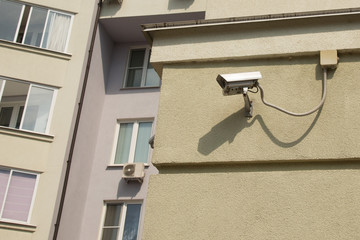Surveillance camera in an apartment building – not always easy!

In times when the protection of one's own data and personal rights is increasingly valued, the installation of video surveillance in a property is not always met with only supporters. What one tenant welcomes as a major step forward in the fight against crime is something that another finds unpleasant. Because they want to prevent other tenants or even the landlord from being able to check when and with whom they leave and enter the house.
Landlords should therefore proceed with sensitivity if they want to install a surveillance camera on or in their property. This is because the consent of all tenants is required - preferably in writing. Tenants must be informed specifically about where in the building the cameras are to be installed. It is therefore not enough to simply ask whether the tenants generally agree to cameras. Instead, the landlord must specify exactly where the cameras will be located before installation. It is also important that the cameras are only allowed to film the property. They are therefore not allowed to record the public part of the street or sidewalk.
But that's not enough. In addition to the location of the cameras, it is also important to explain which area the cameras are recording. If one is in the entrance area, for example, it can either be installed in such a way that it films the tenant directly in the face or only records the head from above.
Furthermore, tenants must be informed about the times at which the cameras are active. This can be only from dusk onwards, for example, or around the clock. There are also cameras that are linked to a motion sensor. This means that they only start when someone approaches. However, they are active around the clock. It must also be explained how long the recordings are stored for. This should not be the case for too long. Storage for several years is usually not permitted. Lawyers tend to talk about one or two days here.
It is also important to many tenants who specifically has access to the recordings. This could be the caretaker, the property management or just the owner. Such a clear definition is intended to prevent the recordings from being misused, for example from being "passed around" in the house or even ending up on the Internet.
Last but not least, the landlord must put up a sign informing people about the video cameras. This is the only way to ensure that strangers are informed about the recordings. The sign must state, among other things, the purpose of the recordings, how long the recordings are stored and who is responsible for the cameras. At the same time, information about the data protection rights of those affected must be included.
If a new tenant moves in later, the landlord must of course provide just as much information about the cameras. This should ideally be done as soon as the rental agreement is signed. If this is done later, it can lead to "unpleasant" discussions, especially if the tenant does not agree. Therefore, it is best to obtain the new resident's consent in writing along with the rental agreement.
If all of this is too complicated, you might come up with the idea of installing a dummy camera instead of a real one. You might think that because it doesn't record anything, it's harmless. But the courts see it differently. Even a dummy creates the feeling of surveillance in the resident, which they don't have to put up with. That's why courts regularly prohibit the use of such dummies without the residents' express consent.
Dr. Carsten Hoth
Landlord Protection Association Germany eV